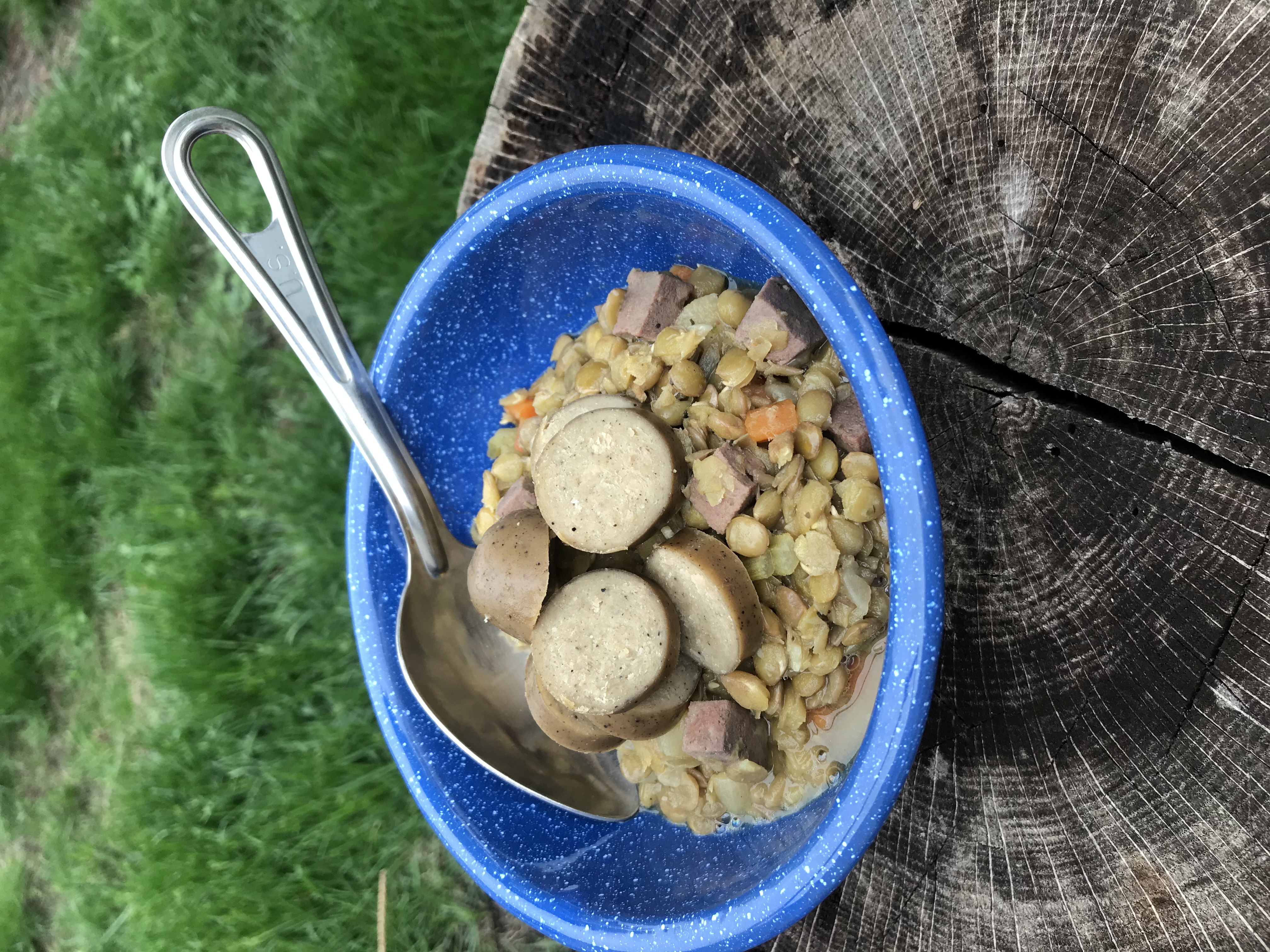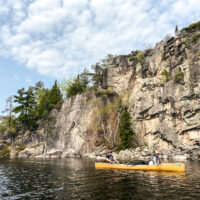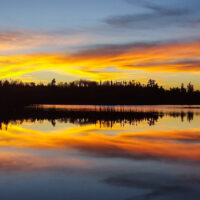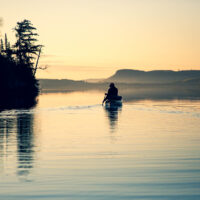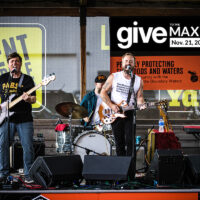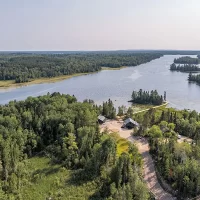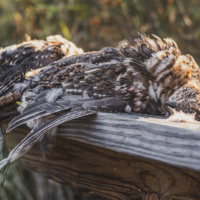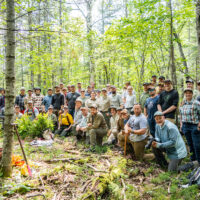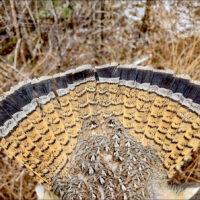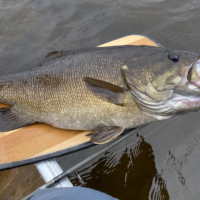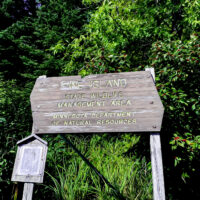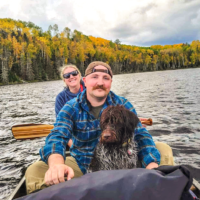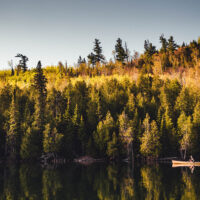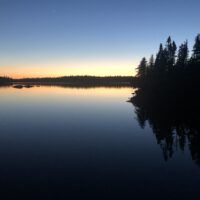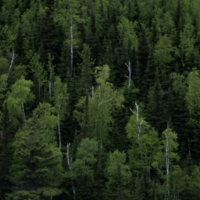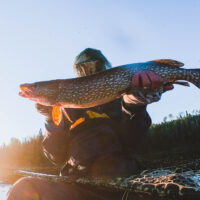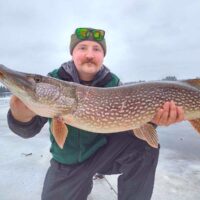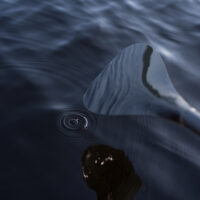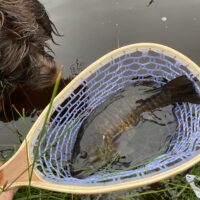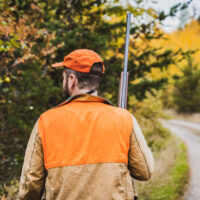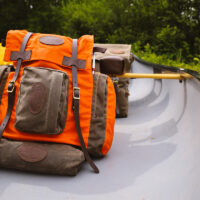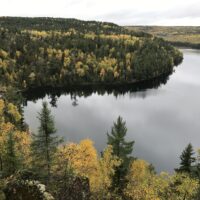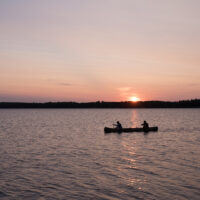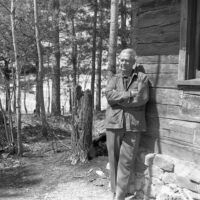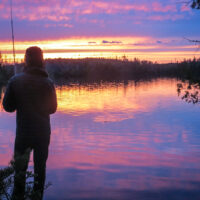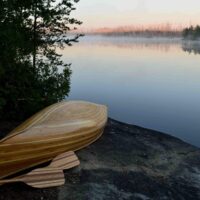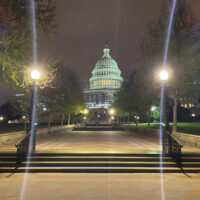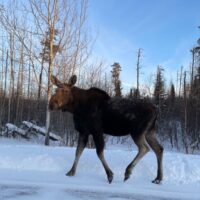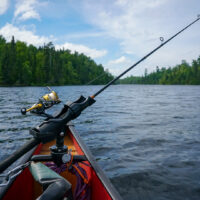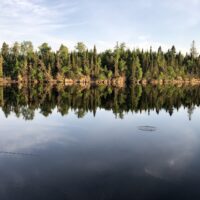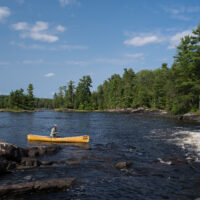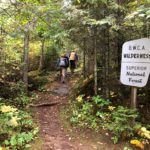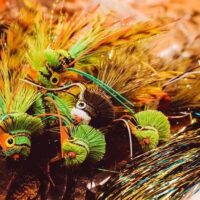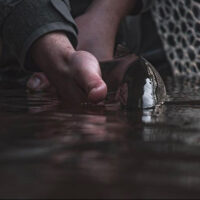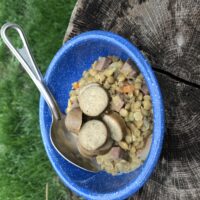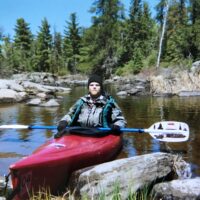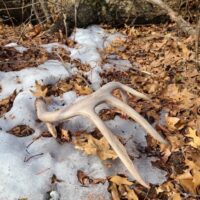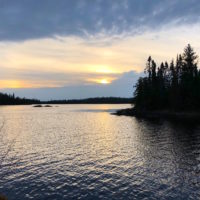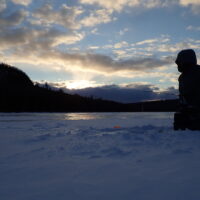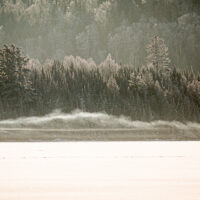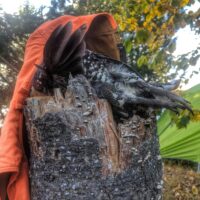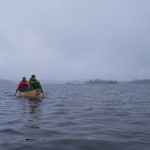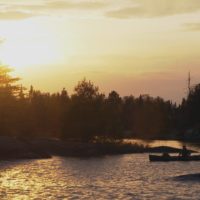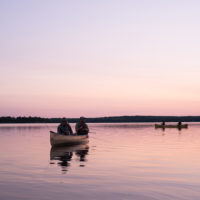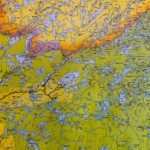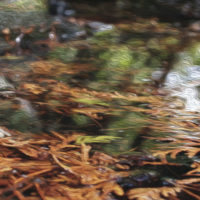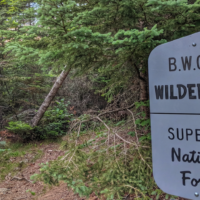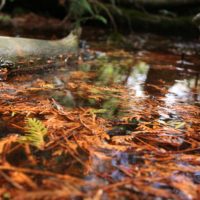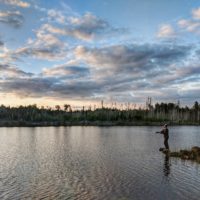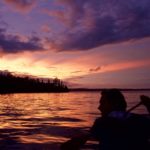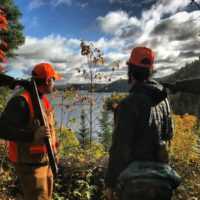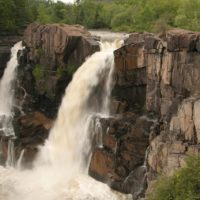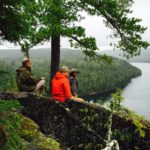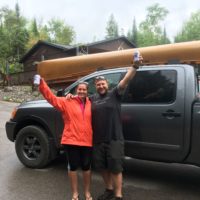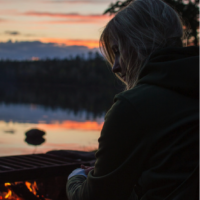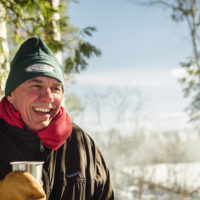Liquid Trailhead: BWCA Lentil & Sausage Stew
May 27, 2021 2:44 pmRecipe by JD Fratzke
From 5.12.2003 – Liquid Trailhead: Lake Three Solo
Using my kayak paddle as a cutting board, I whittled carrot, celery and onions into the Gallic trinity and smashed a few garlic cloves, then swept them into my saucepan with a chunk of butter and a dusting of dried thyme. The aroma rose slowly, that green, musty citrus of thyme whirling into woodsmoke and the unmistakable heartwarming smell of mirepoix and butter coming to life. Setting a kielbasa from Everett’s to sizzle on the grill, I stirred dried lentils and a few chunks of braunschweiger into the pot and topped it off with water and a splash of white wine I had brought in a tiki-shaped Nalgene. I realized my hands were getting chilly and looked up from the coals of the fire to see the sky was splashed with the same colors — a brilliant riot of pink, white, and orange dipping into the black pine spires across the lake. Right on cue, the loons sounded off. It hit me like a fallen limb. I was alone in the Boundary Waters Canoe Area Wilderness. I hadn’t seen another human being all day. Night was falling, and I was making myself a private feast. How many people in human history had felt like this? Medieval travelers… Anishinaabe traders… messengers… abandoned explorers… brigands… I’d put myself in an exclusive company.
BWCA Lentil & Sausage Stew
SERVES: 2-4
PREP TIME: 30-45 minutes start to finish
Ingredients
1 cup dry lentils
1 stalk celery, diced
1 carrot, peeled, diced
1 small yellow onion, diced (about a half cup)
2 garlic cloves, peeled, clipped, smashed, roughly chopped
Hefty pinch dried thyme
Hefty pinch black pepper
2 tbsp. butter
1 4-6 oz link kielbasa
2 oz braunschweiger, small dice (bacon can be substituted for your lack of courage and fortitude)
3 oz white wine (or lager-style beer or water)
2 1/2 cups water
2 oz Dijon mustard
Salt to taste
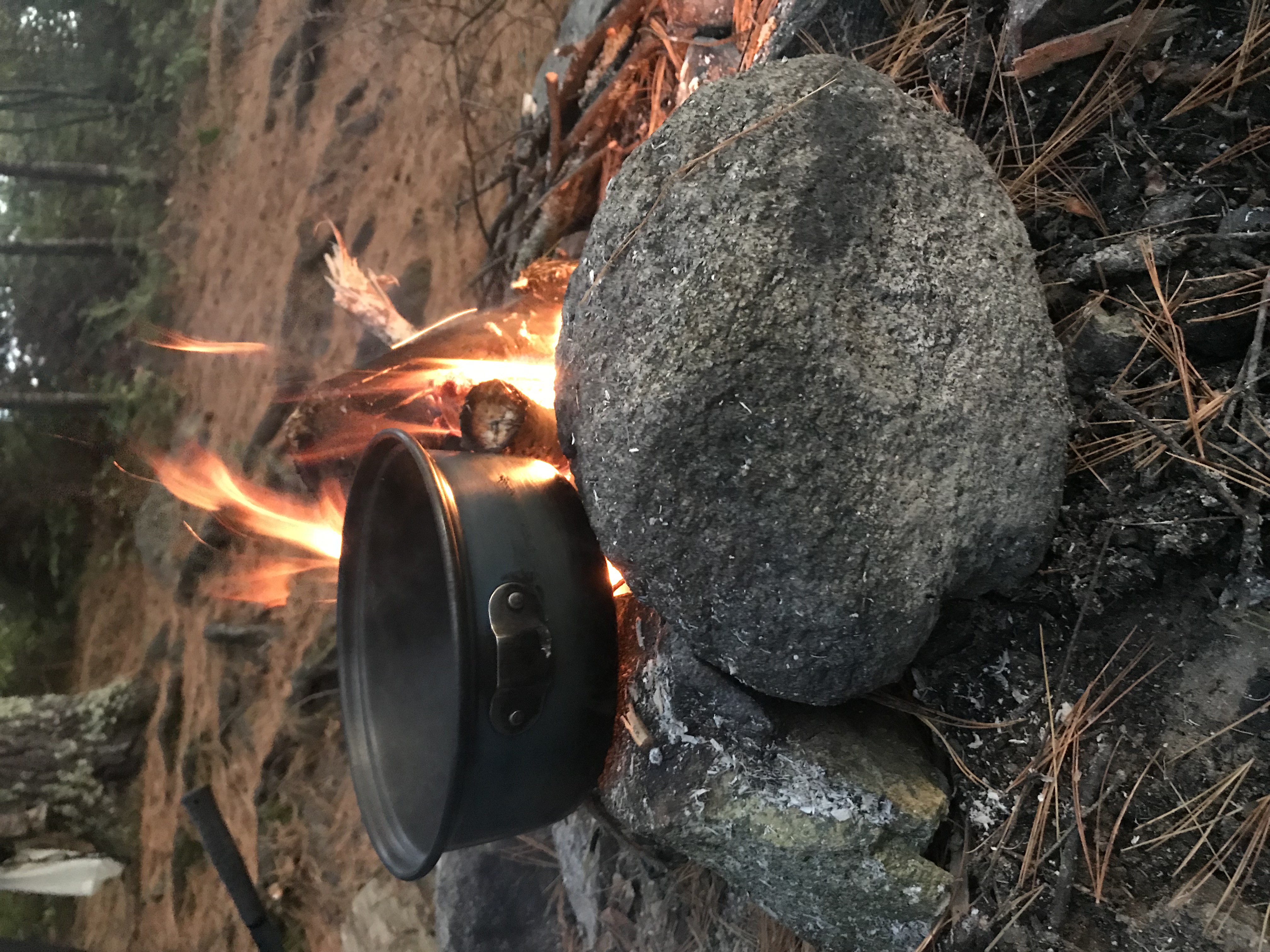
How To Make
1. Place the celery, carrots, onion, garlic, thyme, pepper, and butter in a large saucepan and set it near the warmest part of the campfire cooking surface.
2. Roast kielbasa sausage until grilled evenly and cooked through. Move to cooler part of the grill to keep warm.
3. When vegetables begin to sizzle and the thyme becomes aromatic, add braunschweiger and begin stirring the vegetables, shifting the pan back and forth over the hotter parts of the fire until the onions, garlic, and braunschweiger begin to brown a bit.
4. Add lentils and stir until evenly coated by toasted butter and juices from vegetables and braunschweiger. Add white wine and shift pot to hotter part of the fire, stirring often, until lentils and vegetables have soaked up the wine and it has reduced to about 25%, just coating the bottom of the pot. This will cook the alcohol out of the wine.
5. Add water and bring to a rolling boil, stirring to make sure the mix isn’t sticking to the bottom and scorching. Move pot to a cooler part of the fire and reduce the boil to an even simmer, stirring every few minutes. Lentils should cook through in 20-30 minutes, with a little water left as broth. If lentils start to become dry without cooking through all the way, the simmer may be too high. Stir in a half a cup of water and move to a slightly cooler part of the fire.
6. When lentils are finished to your preference, add the Dijon and slice the kielbasa with your camp knife directly over the pot so that any of the juices drip into the mix for more flavor (it also makes for one less surface to clean or attract hungry and curious nocturnal critters). Stir to incorporate the sausages and Dijon into the stew and dip in your spoon to have a taste. Add salt as you see fit.
PRO TIPS:
– This stew can be stretched out to feed more as a heartier meal with the addition of a cup of diced potato or other root vegetable. Add the potato at the beginning with the aromatic vegetables, just add an additional cup of water to the simmer.
– Potatoes, root vegetables, tofu, mock duck, or other beans like garbanzos or pintos can be substituted for animal parts to make this stew a vegetarian preparation (vegan if one substitutes a preferred cooking oil for the butter). I would recommend a splash of soy sauce from the many packets in your kitchen drawer as an addition to the early part of the cooking process to provide for that meaty, umami flavor.
– Properly stored away from varmints overnight, any leftovers make for an excellent cold breakfast or a hot one with fresh or powdered eggs. I’ve even stirred it into plain oatmeal.
– I’m a big fan of watertight plastic containers (Nalgene and Ziploc have some pretty superb offerings) over zip-sealed bags for several reasons:
– You can pre-prep ingredients like the aromatic vegetables at home, store them in the container and use them later for any leftovers.
– They can seal and contain any foodstuff refuse that shouldn’t end up in your fire (plastic wrappers, foil, used bags, etc).
– You can fill them halfway with water and freeze them at home ad hoc icepack for perishables.
– They can be used as bowls or drinking vessels.
 JD Fratzke is a fourth-generation native of Winona, Minnesota and has been an award-winning hospitality professional for over three decades. In addition to his leadership roles in establishments such as Chino Latino, The Strip Club Meat & Fish and Falls Landing, JD has contributed to the culinary programs for over a dozen establishments in greater Minnesota and appeared as a judge and mentor in season sixteen of BravoTV’s reality show Top Chef.
JD Fratzke is a fourth-generation native of Winona, Minnesota and has been an award-winning hospitality professional for over three decades. In addition to his leadership roles in establishments such as Chino Latino, The Strip Club Meat & Fish and Falls Landing, JD has contributed to the culinary programs for over a dozen establishments in greater Minnesota and appeared as a judge and mentor in season sixteen of BravoTV’s reality show Top Chef.
An avid kayaker, outdoorsman and wilderness advocate, JD’s writing has appeared in the Saint Paul Pioneer Press, The Growler and the anthology Under Purple Skies (Belt Publishing 2019).
JD Fratzke lives in Minneapolis with his wife and daughter.
Tags: backcountry cooking, Boundary Waters, BWCA, cooking, outdoor cooking
